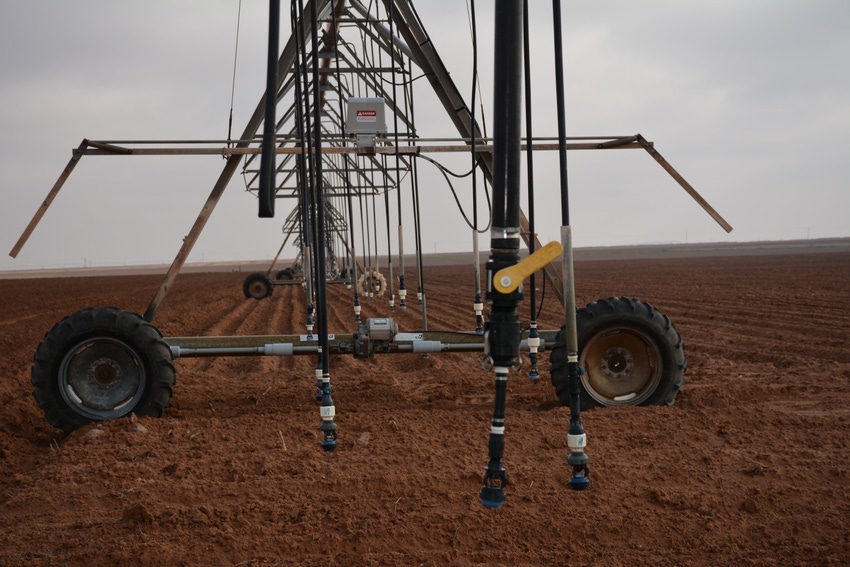
New Mexico farmers optimistic as snowmelt raises river levels
The snowpack in the Rio Grande Basin, which feeds the river and its tributaries, is at about 137 percent of what it normally is for this time of year. As recently as last weekend, light snow was falling in the higher mountains, thanks to a late-season frontal system that moved across Colorado over the weekend.
May 25, 2017

The long range weather forecast in New Mexico is calling for hot and dry conditions this summer, but that hasn't slowed down the current wave of enthusiasm for farmers across the state who are feeling thankful for rising river levels as a result of the continuing snow melt in the northern mountains of New Mexico and across the border in Colorado.
"This is the best flow I have seen on the [Rio Grande] river in about 12 years," reported whitewater rafting instructor John Adams, who says he has enjoyed rafting the Rio Grande near Taos over the last week because excessive flows from melting snow have created Class 4 rapids along parts of the river.
Rafters and kayakers from as far away as Texas have been flocking to northern New Mexico to take advantage of exceptional flow in the river this week. About the only thing overshadowing the enthusiasm of recreational river runners is the high hopes of farmers and ranchers in New Mexico, encouraged to see the summer season start with such strong flows in the state's waterways.
FLOW WILL NOT STAY
"We know this kind of flow is not going to stay with us for long, but it's been so long since we have seen this much water in the river from melting snow it is encouraging to just about everyone who uses water out of the rivers and reservoirs to irrigate crops and provide for their livestock," said Jaime Delgado who maintains an apple orchard not far from Dixon.
It's not just Delgado who is enthusiastic over greater irrigation potential this year. Dr. Phil King, Elephant Butte Irrigation District's (EBID) engineering consultant, recommended an increased water allotment for farmers in the mid-basin region earlier this month, increasing surface water allotments to 18 inches, the most they have seen since 2010. He said with good snow melts currently, he expects the final allotment for farmers may be as high as two feet (24 inches) this year.
GREAT START
While the potential for a dry and hot summer remains in the summer forecast for much of the U.S. Southwest, King and many farmers up and down the river say, at the moment at least, it's a great start to the summer season.
"It’s been about nine years since we have seen this much water," said Royce Fontenot, a National Weather Service hydrologist in Albuquerque.
He said the flow of the Rio Grande River at Embudo earlier this month was at about 3,700 cubic feet per second (cfs) according to data from the U.S. Geological Survey. But last week, the flow near Pilar had reached 4,110 cfs. And the flow has not reached its peak yet.
"We have a really good snowpack this year, especially in Colorado," Fortenot added.
The snowpack in the Rio Grande Basin, which feeds the river and its tributaries, is at about 137 percent of what it normally is for this time of year. As recently as last weekend, light snow was falling in the higher mountains, thanks to a late-season frontal system that moved across Colorado over the weekend.
"Expectations are running high," King told board members of the EBID at their last meeting.
According to the U.S. Army Corps of Engineers website, the 2017 spring runoff so far is the highest snow melt runoff in the Rio Grande since 2008.
Hydrologists, however, say such strong flows in the Rio Grande won't last long. Typically the flow drops dramatically once all the snow in the mountains has melted, usually about the second week of June. But the increased flow is helping to increase reservoir levels across much of the state, and that is what sustains the irrigation season.
"Cities, tribal governments, farmers and ranchers all will benefit from this much water. It may not be enough to sustain crops and livestock through a long summer, especially a dry one, but it is enough to get things started the right way, and with any luck we will see some timely rains in the summer months when we need it the most. That would make for a really good farm year," said Delgado.
Fortenot expects June could well be a dry month for most of the state, but he says farmers are always hopeful the annual monsoon season of July and August will provide enough rain in the mountains to get them to harvest.
Hatch green chile growers and commercial pecan producers in southern New Mexico say with water tables running higher than they have over the last few years, pumping groundwater, while a last resort, should be more than enough for them to realize a good crop this year, provided pests and weeds pressure doesn't upset their plans.
You May Also Like



